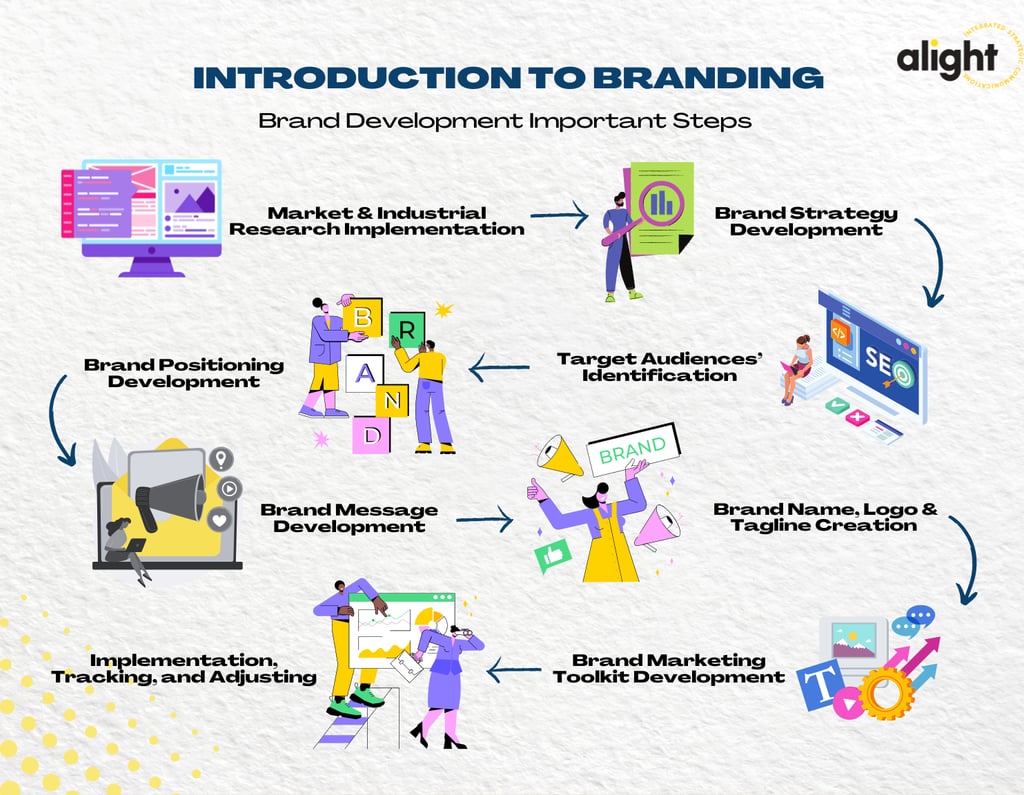Radiate your Brand Light with No Limit
Gives the radiance of your brands to all people around the world and getting high awareness among them will be the exciting dream of the brand owners. It is not only talking about the brands but how it can be absorbed into peoples’ top of minds. How can it be done in a simple way?
BRANDING


Gives the radiance of your brands to all people around the world and getting high awareness among them will be the exciting dream of the brand owners. It is not only talking about the brands but how it can be absorbed into peoples’ top of minds. How can it be done in a simple way?
At the beginning stage, every brand owner should have a deep understanding of the brand itself, its mission and vision, the target audiences, and the brand message that wants to be spread out. By understanding those elements, the brand will build the strong bond with its customers for a long time, which will even continue to grow following the increase in customers’ needs. The above activities are part of the Branding Process within the Integrated Strategic Communications. It is the strategy to form the brand image in customers’ minds and position them in the market. By owning the strong brand, the target audience will have strong reasons to choose the brand or product over the competitors and the brand will become the leader in the marketplace. When the owner initiates to do the brand development, there are some steps that considered to be implemented during the process to ensure that it is already in accordance with the business objective.
1. Conduct the Market and Industrial Research
Prior to developing the business strategy, the owner should implement the market and industrial research to gather information about the current positioning of the brand in the market, industrial and market situations, direct and indirect competitors, do the issue and stakeholders mapping, The results of the research can be used to get the insight about the brand itself and the industry surround.
2. Develop the Brand Strategy
According to the research and insights that are already gathered, the brand strategy can be developed as a guidance for a brand owner to expand and strengthen the brand positioning among their target audiences. This brand strategy can be applied for a specific period, but it can be renewed based on the next branding strategy.
3. Identify the Target Audiences
Selecting the target audiences will be another challenge. The brand should decide the right target audience that they want to engage with, for a specific period. In fact, the market is broad, but the target audience should be narrowed to make the marketing activities focus on the habit of selected customers. The brand can create customer segmentation to classify every activity, such as the primary and secondary target markets. The activity might be different, but the brand message will be the same. In deciding on the target audiences, the owner should refer to the research to get the target audience’s perspective and priorities. By having this information, the brand can anticipate fulfilling the market’s needs, also have the broad picture of how the market views the current brands or companies.
4. The Brand Positioning Development
After conducting the above stages, the brand can determine the brand positioning to get the broad picture of the brand’s strengths within the market and the differences with other competitors. This positioning will act as a promise to the target audiences that should be delivered and well-maintained. Therefore, three to five positioning sentences should be aspirational because it has the powerful meaning to the brand.
5. Brand Message Development
Another important process is creating the brand message strategy as a translation of the brand positioning, which was already made in the previous stage. The brand positioning might be the same for all target audiences that have been selected, also for employers, influencers, partners, and other related parties. However, the brand message will be different because each audience might be interested in different aspects, have different concerns, and implement different approaches. And the messaging strategies should address those needs.
6. Create the Brand Name, Logo, and Tagline
If the brand already exists in the market, the use of the same brand name is still valid. However, if the brand is new, has merged with another brand, or changes its brand positioning, then the brand name should change accordingly. Besides the brand name, the brand identity also includes the logo and a tagline that should be customized to support the brand positioning.
7. Develop the Brand’s Marketing Toolkit
After having strong resources to develop the brand, the marketing toolkit will take an important role in spreading the brand in the market. This might be varied depending on the target audience’s behaviour or activities. Some brands use various types of videos, motion graphics, or infographics to communicate with clients. On the other hand, the attractive type of stationary, marketing deck, brochure, banner, and others will work well for the other type of clients. Before, selecting the toolkit, the owner should have a well-understanding of target audiences in sending the brand message to the right person.
8. Execute the Implementation, Tracking, and Adjustment
This step is one of the important roles to do during the brand development process or it can be said as a ‘Branding Process”. The brand owner should ensure that all those stages are being implemented on a regular basis to create a branding culture for growing and being on the top. In fact, other regular activities need to be handled as well. Therefore, the owner should monitor the process to avoid any kind of barriers. The implementation should follow the plan that is already being created previously or we can say that it should be ‘on the track’. By doing the tracking, the brand owner can make the adjustment in the implementation process, which can come out with better results.
The above steps of the branding process can be less or more that depends on the current brand condition or the objective of the brand in the next stage. By having a strong brand, the radiance will continuously spread worldwide, and the process of Integrated Strategic Communications will run smoothly and independently with no limitation.



